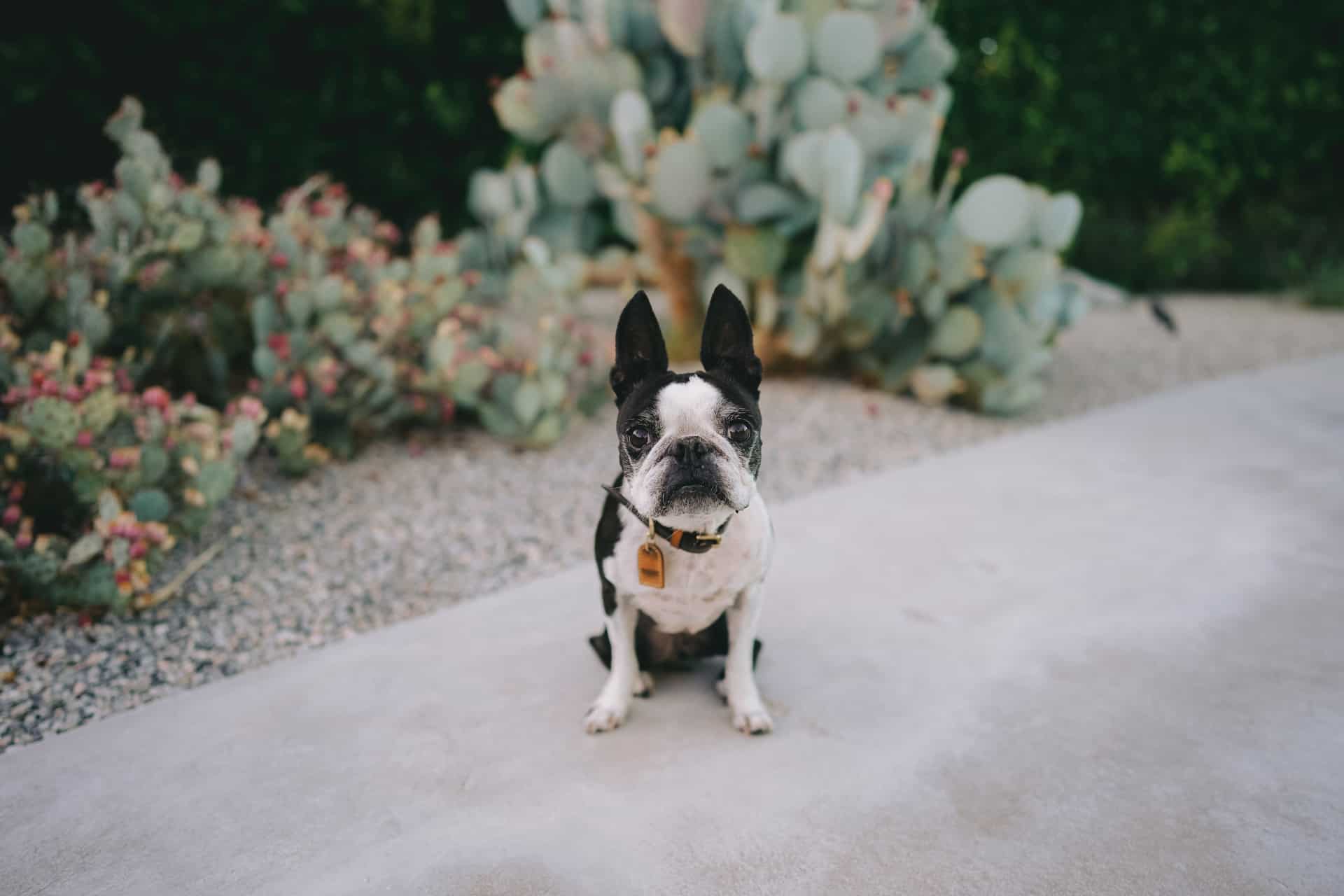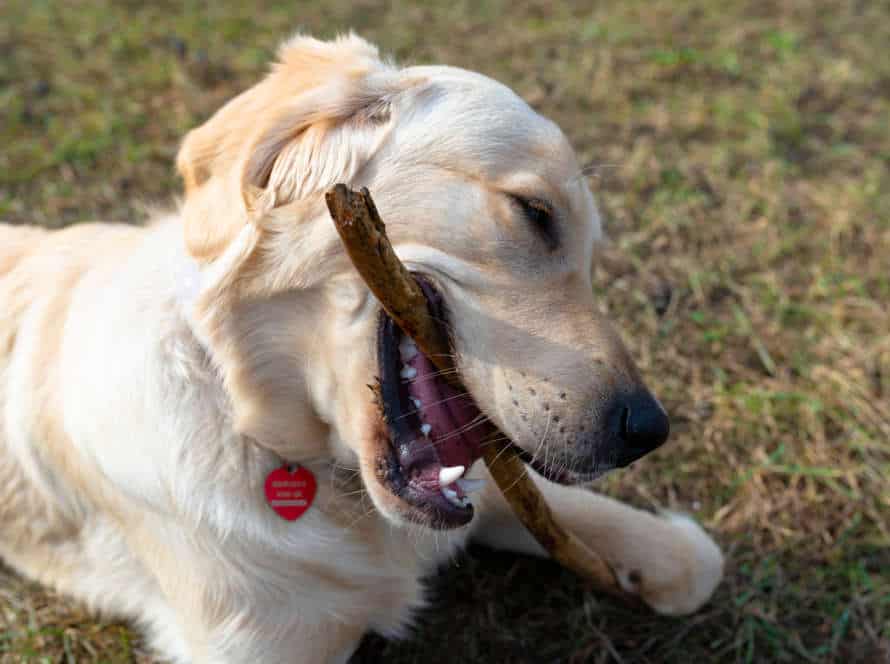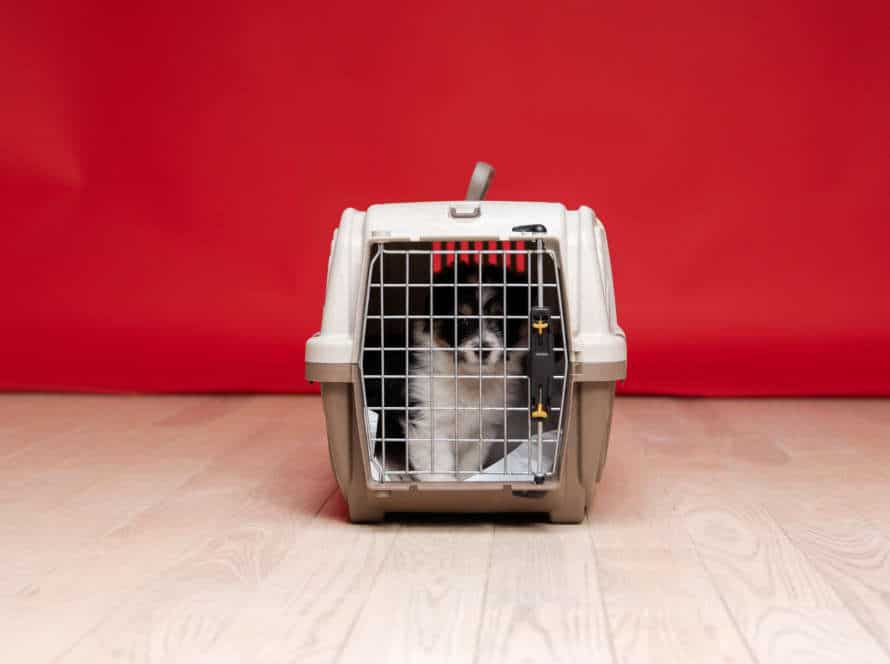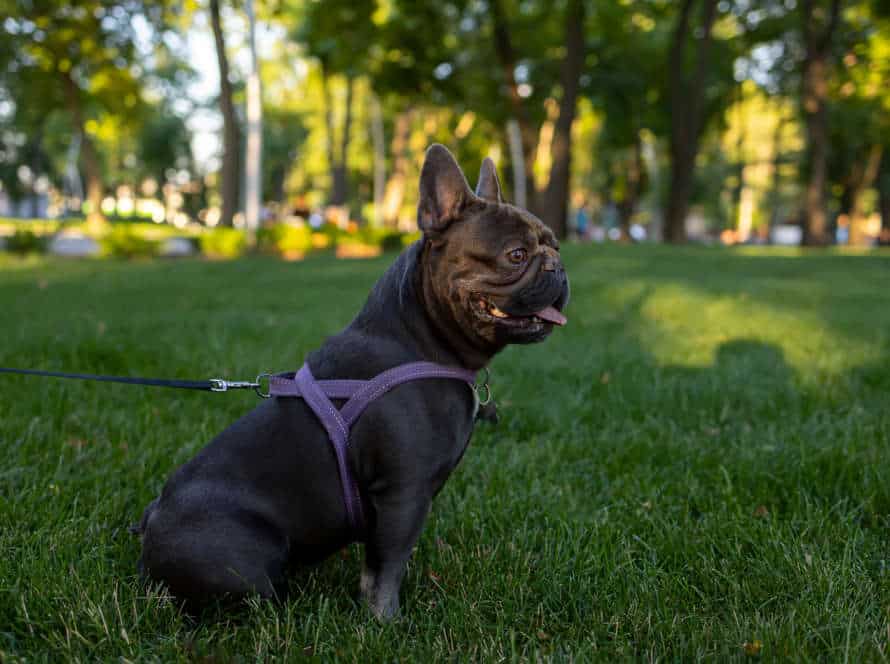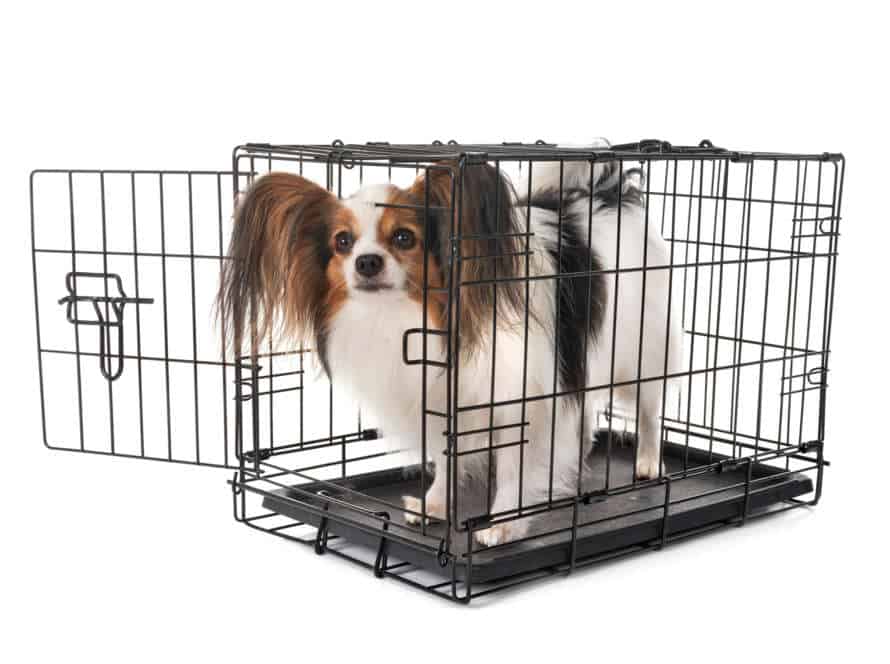The Stay Command: Teaching Your Dog Patience and Self-Control
Teaching your pup the “stay” command is a must for teaching them patience and self-control. Here’s how:
- Start with your dog sitting or standing.
- Say “stay” clearly and firmly.
- Make eye contact, then take a step back.
- If they stay, give praise and a treat.
- Gradually increase the distance and duration of the “stay” command.
- Be patient and consistent while training.
- Keep sessions short and positive. Enjoy the learning process with your pup!
Why Teach Your Dog “Stay”?
Teaching your pup the ‘stay’ command has many benefits! It teaches them patience & self-control. Plus, if you ever lose the leash, it’ll help stop them from running away. In this article, let’s discuss why the stay command is important and why it’s great to teach your dog.
Benefits of teaching “Stay” to your dog
Teaching “Stay” to your pup brings many advantages for both you and your furry companion. Here’s why every doggy parent should make it a priority:
- Safety: “Stay” can help keep your pup secure in a possibly hazardous situation by stopping them from running into traffic, chasing animals, or coming close to hazardous substances.
- Self-control and discipline: Through learning to “Stay,” your pup can develop important self-control and discipline skills. This can make training them in other areas much easier.
- Bonding: Mastering fresh commands and working together to reach a common goal can improve the bond between you and your pup.
- Mental stimulation: The mental challenge of understanding a new command can be exciting and appealing for your pup, stopping boredom and bad behaviors.
By teaching your pup to “Stay,” you are giving them a sense of security and structure, as well as increasing their mental and emotional health.
Different situations to use “Stay” with your dog
Train your pooch the “Stay” command – it’s key in pup-raising! Here’re various times you can use it:
- Greeting guests? Use “Stay” to stop them jumping or running away.
- Mealtimes? Use it to prevent begging or rushing their food bowl.
- Cross the road? Use it to stop them running ahead and getting into trouble.
- Training sessions? Use it to back up commands like “Come,” “Lie Down,” and “Heel.”
By teaching “Stay,” you’ll help your furry pal become obedient and well-behaved – benefiting you both!
Overcoming common challenges in “Stay” command
Training your pooch to “stay” is a must-know command. But many dog owners may experience challenges. Here’s how to tackle them:
- Breaking the Stay: If your pup keeps breaking the stay, start in a quiet, low-distraction environment. Increase distractions as they get better.
- Short Attention Span: Start with short training sessions. Increase the duration to build focus.
- Impatience: Increase distance during training. Work up to longer distances.
- Fear and Anxiety: Use gentle, positive methods to build trust and confidence.
Remember to always use positive reinforcement and be patient. With time and consistency, your furry pal will have good obedience skills and self-control.
Pro tip: Practice “stay” in various places, like parks or busy streets. This’ll help your pup stay calm in new situations.
How to Teach Your Dog “Stay”
Train your pup patience, self-control and obedience with the stay command! It takes a bit of patience and consistency, but the reward of having a well-trained dog is worth it. Let’s learn how to teach the stay command.
Start with basic training techniques
Training your pup the “stay” command can be made simpler by commencing with fundamental education techniques that construct on your pooch’s understanding of obedience signals. Here are a few guidelines for teaching your dog the “stay” command:
- Start off with the “sit” command. When your pup is sitting quietly, give the “stay” command in a strong, lucid voice.
- Reward your pup with treats and positivity when it remains in position.
- Begin with brief durations of 2-3 seconds then slowly raise to longer durations.
- Keep the coaching sessions merry and quick, no more than 5 minutes at a time.
- As your pup gets better at obeying the stay command, begin introducing distance and distractions to the training.
Bear in mind to be patient and consistent. With practice and replication, your pup will learn to obey the “stay” command faithfully.
Introduce distractions slowly
Training your pup the “Stay” order is a must-have in obedience teaching. To make sure your dog succeeds, introduce distractions slowly. Here’s how:
- Choose a calm, familiar place with minimal distractions.
- Get your pup to sit or lie down, then give the “Stay” command.
- Step away from your pup, keeping eyes on them.
- If your pooch stays put, praise and offer them a treat.
- Gradually increase the distance and time of the “Stay” command.
- Add distractions like toys or other animals only when your pup is comfortable and succeeding.
- Remember to reward good behavior and be patient as they learn this significant skill!
Keep your dog engaged and motivated throughout the training process
Ensuring your pup remains engaged and inspired during training is essential for a successful experience. Here are some tips to help you:
- Treats, praise and playtime can be used as positive reinforcement rewards when your dog behaves well during training. This will make the process enjoyable for them and motivate them to work harder.
- Toys and puzzles are perfect for keeping your dog occupied during breaks. That way, they won’t get bored and will stay focused during the sessions.
- Divide the training into shorter periods, to avoid overloading your pup. Doing exercises repeatedly will make them feel confident and successful.
- Be patient and empathetic. Each dog is unique and learns at their own pace. Don’t lose your cool if extra time and practice are needed to learn certain commands.
By following these tips, you’ll keep your pup eager to learn and motivated during training.
Advanced Training Techniques for “Stay”
Teaching your pup the ‘stay’ command is vital. It’s not just necessary for them to stay in one spot, but also an exercise in discipline and self-control. Let’s check out some advanced techniques to teach the stay command which will strengthen the bond between you and your pup.
Increase duration of the “Stay” command
The “stay” command is a must-know skill for all dogs. With the right techniques, you can make your pup’s “stay” last longer, improving their patience and self-control.
Here are a few steps to help you:
- Start at the basics: Make sure your pup understands the basic “stay” command before increasing the duration.
- Increase it gradually: Ask your pup to “stay” for a few seconds, then increase it slowly over time. Be sure to reward them when they hold the position.
- Add distance: When your pup can remain in the “stay” position for a while, begin to increase the distance between you. Reward them for remaining in position.
- Introduce distractions: Finally, add distractions to the mix so your pup can master the “stay” command even when things get tough.
Pro Tip: Always be patient while training and keep the sessions short and rewarding.
Increase distance between you and your dog during “Stay”
To make your pup’s “Stay” command better, increasing the distance between you two is key. Here’s how:
- Start off with your doggo in a “Stay” a few feet away from you.
- Back away, one step at a time, while keeping eye contact.
- Get back to your starting position if your pooch breaks the “Stay”.
- Do this a few times and over time, get further and further away until they can stay even when you’re in a different room.
- Don’t forget to reward your pup with treats and lots of love as they learn the command!
Gradually increase the level of difficulty by introducing new challenges
Train your pup to stay using the “stay” command? Here’s how:
- Start close to you and move further away, increasing the distance.
- Begin with a few seconds and work up to a few minutes of staying in position.
- Introduce distractions to test your pooch, like other people, toys, or food.
- Teach your dog to stay while you move around.
Remember, have patience and be consistent. This will lead to an obedient pup.
Common Mistakes to Avoid When Teaching “Stay”
Training your pup the ‘stay’ command is a must! It needs patience from both pup and owner. It might seem easy, but many make mistakes that can make it harder. Let’s check out the common errors and how to dodge them.
Don’t rush the training process
Training your pup to “stay” is essential for patience and self-control. Don’t rush it! Here are some things not to do:
- Don’t increase the distance too soon. Start close and gradually increase.
- Don’t move too fast. Increase the time slowly.
- Don’t forget to practice. Do 5-10 reps daily.
- Don’t punish them. Reward success instead.
Take your time and your doggy will learn to stay patiently and with self-control.
Avoid using negative reinforcement or punishment
Teaching your dog the “stay” command? Avoid negative reinforcement or punishment. This includes yelling, hitting, or shock collars. These can harm your pup and damage your relationship. Instead, opt for positive reinforcement like treats or praise when they stay.
Avoid common mistakes too, like moving quickly from short to long intervals, not training in different environments or with distractions, and forgetting to release the dog.
Consistency, patience, and positive reinforcement are key when teaching your pup the “stay” command.
Don’t forget to praise and reward your dog when they succeed
Teaching your pup the “Stay” command is key. Praise and reward them when they do it right. This reinforces good behavior and encourages them to obey. Too many pet owners forget to reward their pooches, causing confusion and disobedience.
Follow these tips:
- Keep training short and regular.
- Be positive, patient, and rewarding.
- Begin small and build up duration.
- Be consistent with body language and commands.
- Praise and reward with treats or playtime after each success. That’ll motivate them to keep going!
Troubleshooting “Stay” Command Issues
Teaching your pooch the command “Stay” is essential for training. It helps build your dog’s patience and teaches them self-control. But, it’s normal to come across problems. Here are some tips to help fix them. Common issues? There’s solutions for those too! Let’s check them out.
My dog won’t stay for long periods of time
The “stay” command is really important for your pup’s training. If they won’t stay for long, here’s what you can do.
- Firstly, make sure your dog has learned the command in shorter lengths. Increase the time and distance each time.
- Secondly, reward them with treats or praise if they stay for longer. You could also give them a chew toy or bone.
- Lastly, some dogs just aren’t good at self-control. Be patient as they learn. With consistent training, they can master it.
My dog keeps breaking the “Stay” command
If your pup won’t obey the “Stay” command, there are few steps to help:
- Start with small, easy stays and grow the duration and difficulty.
- Make sure your doggo knows exactly what you want. Use rewards for good behavior.
- Help with self-control and patience by practicing “Leave it” or “Wait”.
- This will stop them from breaking the “Stay” command.
- Remove distractions and make sure they’re comfy, relaxed, and focused on you.
- Be consistent in your training, and patient with your pup. With time and positive reinforcement, they’ll learn to obey the “Stay” command.
My dog doesn’t seem interested in training
If your dog isn’t keen on training and you’re having difficulty teaching the “stay” command, there are a few things to think about.
- Firstly, ensure you put your dog in a situation where they can succeed. Begin with small, achievable steps, and increase the complexity as you and your pup progress.
- Secondly, get to know your pup’s personality type and learning style. Just like humans, dogs have different personalities and may benefit from different training techniques. Test out different methods to find what works best.
- Thirdly, review your rewards and positive reinforcement to make sure your pup is being incentivized. If you don’t see any improvement, it may be helpful to consult an expert.
- Finally, remember that patience and consistency are key. With dedication and effort, your pup will learn to be patient and show restraint.
Conclusion
Train your pup the stay command! It gives advantages to you and your dog. It cultivates patience and self-control. This way, your pup can show more composure in any given situation.
Consistently and patiently enforce the stay command. You can be sure that your dog will be serene and aware, no matter what is happening around them.
This article examined how to teach the stay command and the multiple benefits that it offers.
Recap of the benefits of teaching “Stay”
Teaching your pup to “stay” has many great perks! Here’s a quick overview:
- Better listening: Your pooch will be more obedient when they know how to stay when commanded.
- Protection: In risky scenarios, like a busy street or a stranger, the “stay” command keeps them safe.
- Improved socialising: By having self-control, your pup can stay calm around others.
- Mental stimulation: Training “stay” challenges their brain, keeping them smart and alert.
It may take a while, but the results are worth it. Your furry friend will be happier, healthier and better behaved with this essential command!
Pro Tip: Be consistent when teaching them “stay”. Use clear verbal cues, positive reinforcement and gradually increase the duration.
Final tips for successfully teaching “Stay” to your dog.
Taming your dog to “Stay” needs patience, sameness, and lots of practice. Here’s a few last pieces of advice to help you become victorious in training your pup to stay:
- Start with brief times and step by step extend the time they stay as your dog gets more secure and positive.
- Utilize positive reinforcement systems such as rewards, commendations, and toys to make progress and encourage your dog’s behavior.
- Utilize a clear and uniform pitch of voice, body language, and signals to tell your pup when to stay and when they can move.
- Concentrate on your dog’s temperament, nature, and learning style, and alter your training approach in like manner.
By following these ideas and being patient and predictable, you can be successful in teaching your dog the “Stay” command. This will help them to cultivate patience and self-control, and reinforce your bond and trust with your furry companion.
Extra tip: Make training periods amusing and thrilling for your dog by adding games and rewards.
Frequently Asked Questions
Q: What is the stay command?
A: The stay command is a training technique used to teach a dog patience and self-control by instructing them to remain in a specific position until released.
Q: Why is teaching your dog the stay command important?
A: Teaching your dog the stay command can be important for safety reasons, as it can prevent them from running into danger or causing harm to themselves or others.
Q: How do I teach my dog the stay command?
A: To teach your dog the stay command, you should start with the basic “sit” or “down” command, then instruct your dog to stay while holding up your hand in a “stop” position. Gradually increase the amount of time your dog stays in position before rewarding them.
Q: How long should I expect it to take to teach my dog the stay command?
A: The length of time it takes to teach your dog the stay command will vary depending on their breed, personality, and previous training experience. However, with consistent practice, most dogs should learn the stay command within a few weeks.
Q: Do I need any special equipment to teach my dog the stay command?
A: No special equipment is needed to teach your dog the stay command, although a sturdy leash and collar may be helpful for keeping your dog in position during training sessions.
Q: Can I use the stay command for other situations?
A: Yes, the stay command can be useful for a variety of situations, such as when your dog needs to wait patiently for their food, greet visitors calmly, or remain in place during grooming sessions.

